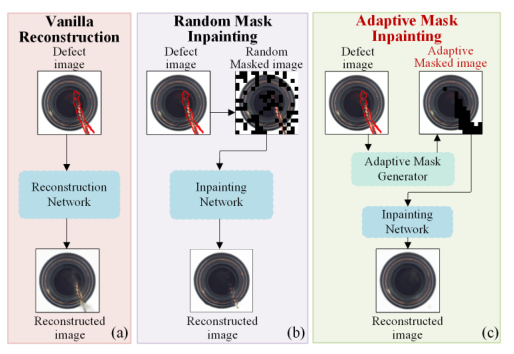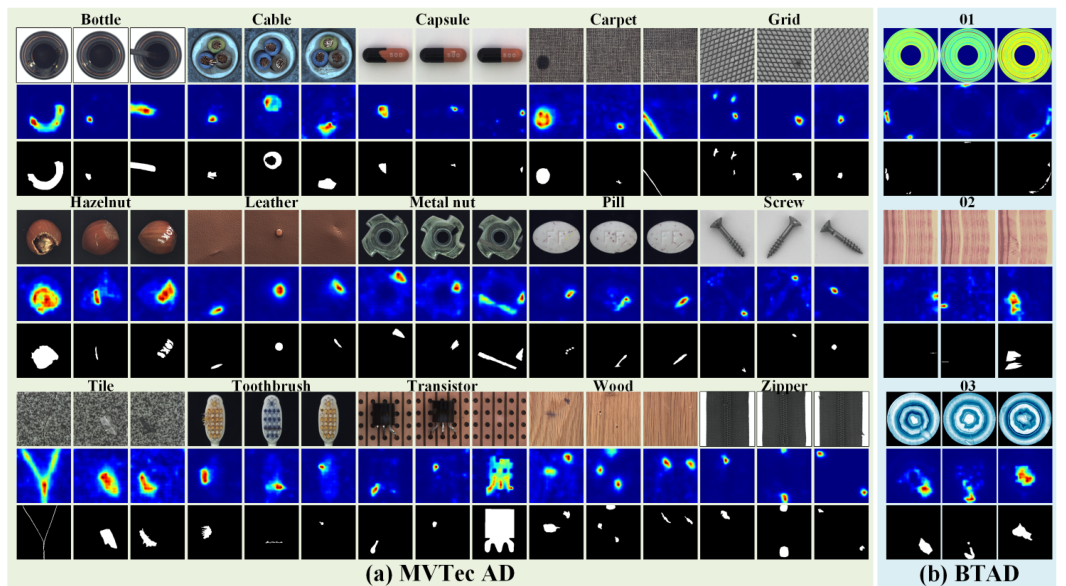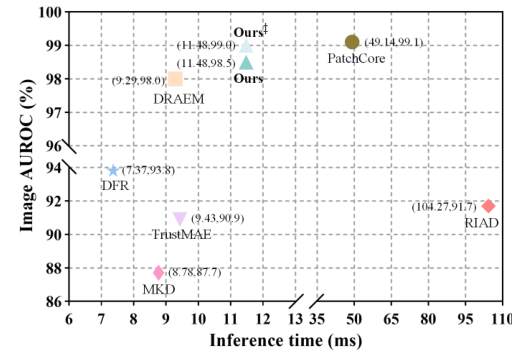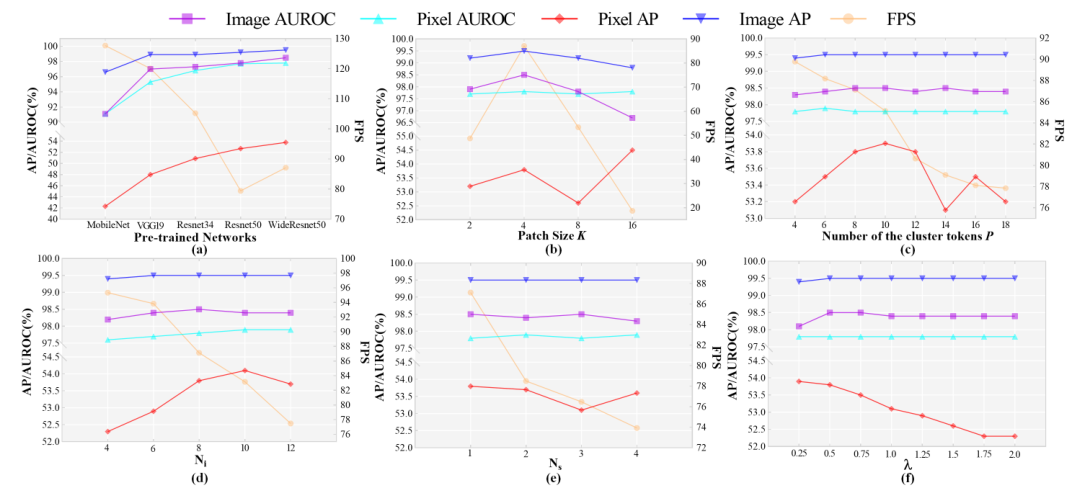AMI-Net: Adaptive Mask Inpainting Network for Industrial Anomaly Detection and Localization
Wei Luo, Haiming Yao, Wenyong Yu, Zhengyong Li·December 16, 2024
Summary
AMI-Net, an adaptive mask inpainting network, excels in unsupervised industrial anomaly detection. It uses a pre-trained network to extract multi-scale features, incorporating a random masking strategy during training. The innovative adaptive mask generator preserves normal regions while effectively masking anomalies, leveraging global contextual information for restoration. AMI-Net demonstrates high accuracy and real-time performance, suitable for industrial applications. It outperforms existing methods in detection and localization, achieving perfect image-level AUROC on several datasets. The adaptive mask generator, though effective, faces challenges with pose diversity in object categories, making AMI-Net more suitable for texture category detection.
Introduction
Background
Overview of industrial anomaly detection
Importance of unsupervised methods in industrial settings
Challenges in industrial anomaly detection
Objective
Aim of the research: developing an efficient unsupervised anomaly detection system
Focus on AMI-Net's capabilities and contributions
Method
Data Collection
Sources of industrial data for anomaly detection
Preprocessing steps for data readiness
Data Preprocessing
Techniques for handling industrial images
Feature extraction methods for anomaly patterns
Architecture of AMI-Net
Multi-scale Feature Extraction
Role of pre-trained networks in feature extraction
Importance of multi-scale features in anomaly detection
Adaptive Mask Generator
Mechanism of the adaptive mask for preserving normal regions
Utilization of global contextual information for anomaly masking
Training Strategy
Random masking strategy during training
Optimization of the network for anomaly detection
Performance Evaluation
Detection Accuracy
Metrics for evaluating anomaly detection performance
Comparison with existing methods
Localization Precision
Techniques for assessing anomaly localization
Analysis of AMI-Net's localization accuracy
Real-time Performance
Evaluation of AMI-Net's speed and efficiency
Suitability for industrial applications requiring real-time processing
Challenges and Limitations
Pose Diversity in Object Categories
Impact on adaptive mask effectiveness
Strategies for improving detection in diverse object poses
Texture Category Detection
AMI-Net's suitability for texture-based anomaly detection
Potential enhancements for broader application
Conclusion
Summary of AMI-Net's Contributions
Future Directions
Ongoing research and potential improvements
Expansion of AMI-Net's capabilities for future industrial applications
Basic info
papers
computer vision and pattern recognition
artificial intelligence
Advanced features
Insights
In what ways does AMI-Net outperform existing methods in detection and localization, and what are the limitations of its adaptive mask generator?
What are the key features of AMI-Net's adaptive mask generator and how does it preserve normal regions while masking anomalies?
How does AMI-Net utilize a pre-trained network and random masking strategy during training?
What is AMI-Net and how does it perform unsupervised industrial anomaly detection?









